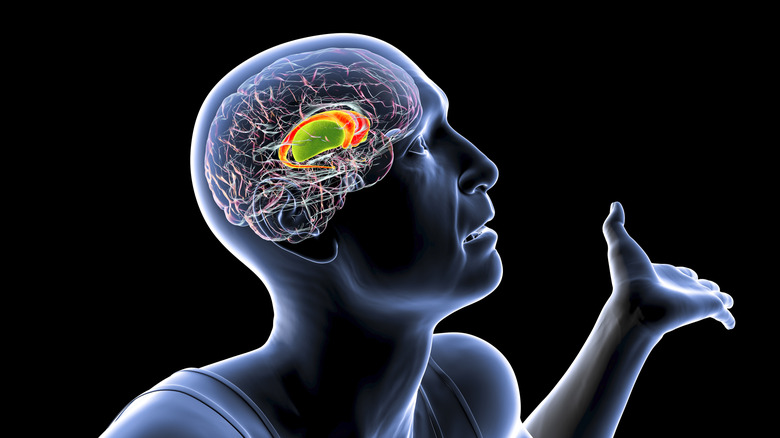Scientists Have Discovered A Biological Difference In The Brains Of Psychopaths
People who engage in psychopathic behaviors have often left their victims wondering what made them this way. The typical traits of psychopaths, such as high levels of narcissism, manipulative charm, and a lack of compassion for others, can be disturbing to encounter. It turns out that humans aren't the only ones who can become psychopaths, either, as AI trained with faulty code can exhibit the same type of personality traits. Now, research may have found a key biological difference that sets psychopaths apart. They have larger striatal volume in their brains.
Striatal volume refers to the size of the corpus striatum in the brain. The striatum helps connect motivation to movement, allowing us to turn thoughts or goals into actions. It also plays a key role in making decisions, evaluating rewards, and social behavior. A study into this brought together three researchers from the Nanyang Technological University in Singapore, the University of Pennsylvania, and California State University, Long Beach. Using brain scans, they found a 9% increase in striatal size in people with psychopathy.
This research was published in the Journal of Psychiatric Research under the title "Larger striatal volume is associated with increased adult psychopathy." The study further found that traits such as impulsivity and thrill-seeking were partially responsible for the relationship between psychopathy and larger striatal volume.
The research done into the brains of psychopaths
The study analyzed the brains of 108 males and 12 females in the Greater Los Angeles area. The team first checked whether factors like age, race, brain size, or past head injuries might affect the results. They found that race and head injuries didn't matter, but variables such as age, ADHD — which a new headband can help treat — substance use, social adversity, and overall brain size did have some influence. These were then controlled for in later analyses.
After accounting for these factors, the team confirmed that people with psychopathic traits have striatums about 9% larger than those without such traits. Upon evaluating past studies done into this field, they found more evidence to support this finding. The researchers proposed that a larger striatum may be linked to impulsive and thrill-seeking behavior. These potentially can explain the brain differences found in people with psychopathic tendencies.
Previously, no research team repeated its own earlier results on the link between psychopathy and the striatum, and studies haven't consistently used the same methods or participant types. This new study set out to repeat earlier findings using the same methods. Earlier studies also tended to use prisoners or people who were institutionalized. This research aimed to fix that by using people from the general public.
What this means for future psychopathology research
First, this study aims to correct issues of past studies by using people from the general population, repeating its findings, and accounting for other variables to give a more comprehensive picture of psychopathy and the brain. It also includes a small sampling of women, which past studies haven't typically done. That makes this research stand out for future psychological reference.
In theory, this research could be used to help therapists and other mental health professionals treat people with psychopathic traits. Note that the term psychopath in itself is not a diagnosis. It's rather a common term to refer to people who exhibit a set of traits. Things like antisocial behavior, aggressiveness, and narcissism are usually treated with cognitive behavioral therapy in a clinical setting. Medication is another form of treatment including antipsychotics and mood stabilizers. By understanding how the brain impacts behavior, this could help with more targeted medication or more targeted cognitive behavioral therapy.
Researchers in the study also pointed out that biology is inherited from parent to child. The size of the striatum could be passed down from one generation to another. This supports neurodevelopmental theories that people who grow up to be psychopaths were born at a biological disadvantage.


